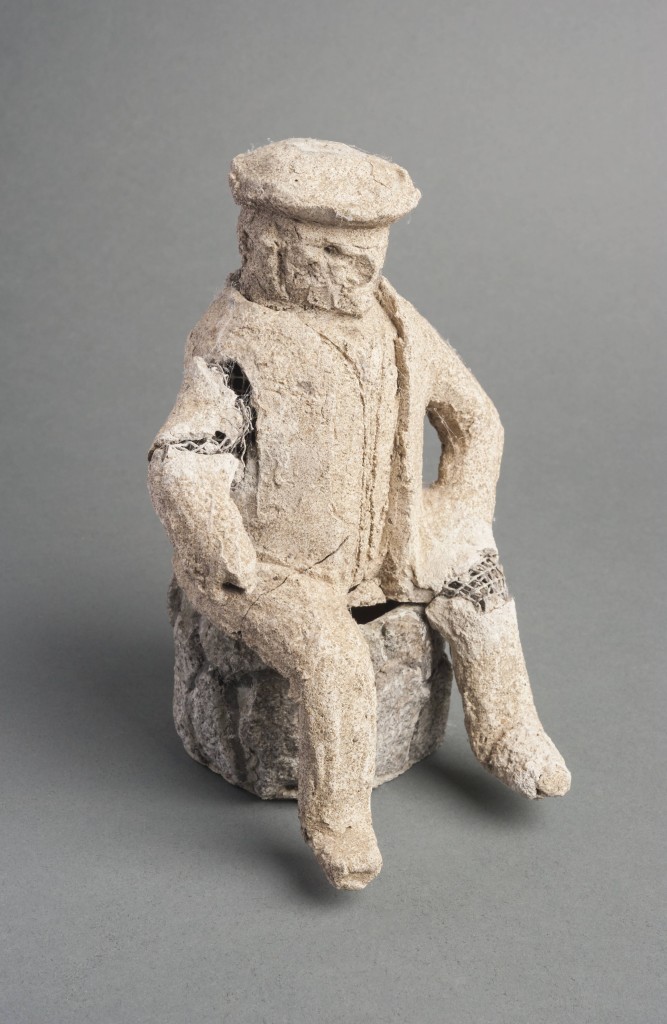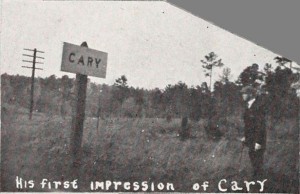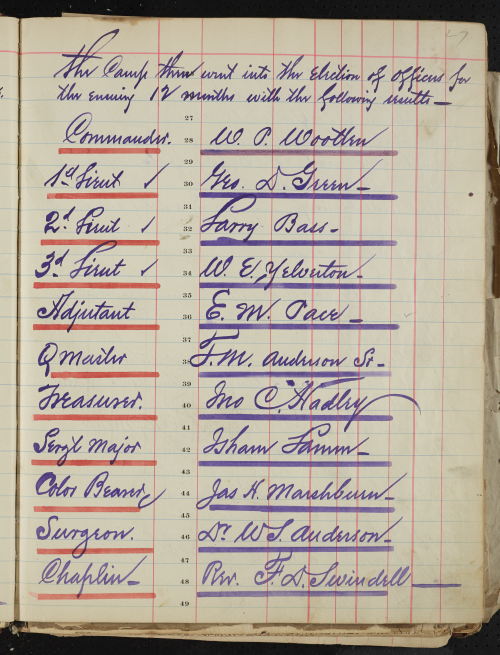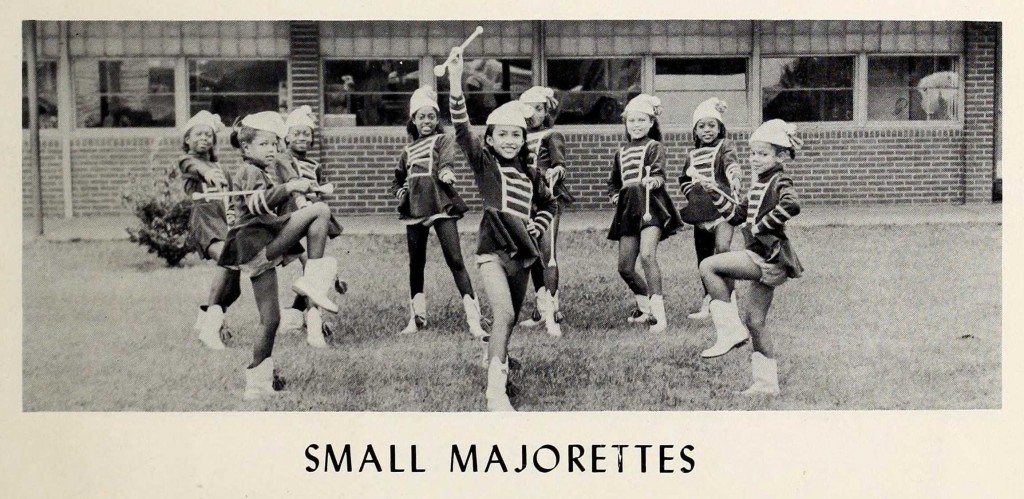Monday Matchup
Here on our blog, we occasionally feature “matchups” that showcase relationships between different items in our collection. Today’s matchup? A photograph contributed by Rockingham Community College and several advertisements from the Roanoke News and The Alamance Gleaner newspapers.
“Probably no natural demand of the human system is satisfied with keener or more genuine relish than that of quenching the thirst on a warm summer’s day with some cool tasteful beverage. Such a satisfying drink is Bevo, the new non-intoxicating beverage just placed on the market by the Anheuser-Busch Brewing Association of St. Louis.” American Brewers’ Review, 1916
One of our most popular blog posts to date is about prohibition, focusing on the iconic images of the era showing alcohol seizures and bootlegging stills. Today’s post instead looks at marketing of the near-beer alternative, Bevo. We learned about Bevo after noticing the cargo stowed in the truck shown below:
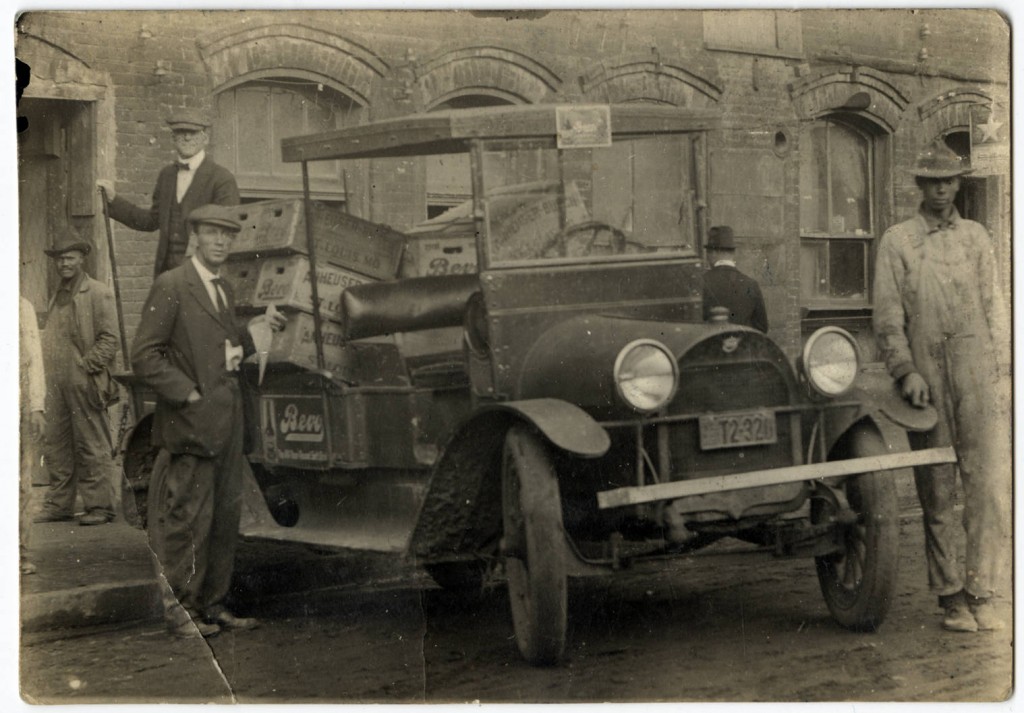
Postcard with image of truck loaded with Bevo, Courtesy Rockingham Community College
In the 1910s and 1920s, brewing companies under the press of prohibition sought non-intoxicating alternatives to beer. Bevo was a cereal-based beer produced by Anheuser-Busch in St. Louis, beginning in 1916 through 1929. We located several interesting advertisements for Bevo in some of the local newspapers. (Don’t drink the germ water!)
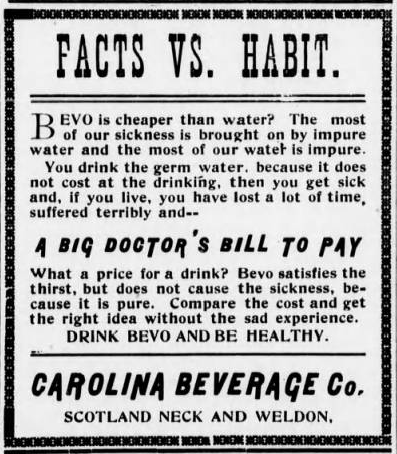
Bevo Advertisement, Roanoke News 1920-01-29
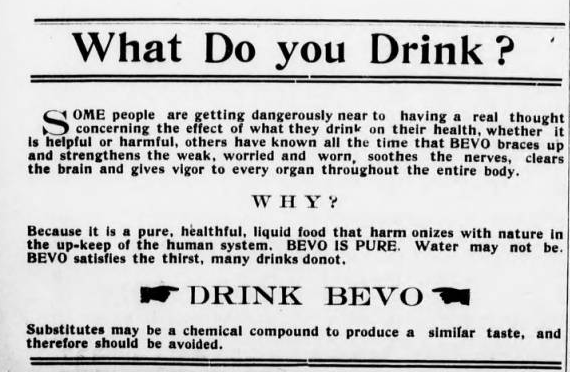
Bevo Advertisement, Roanoke News 1919-09-04
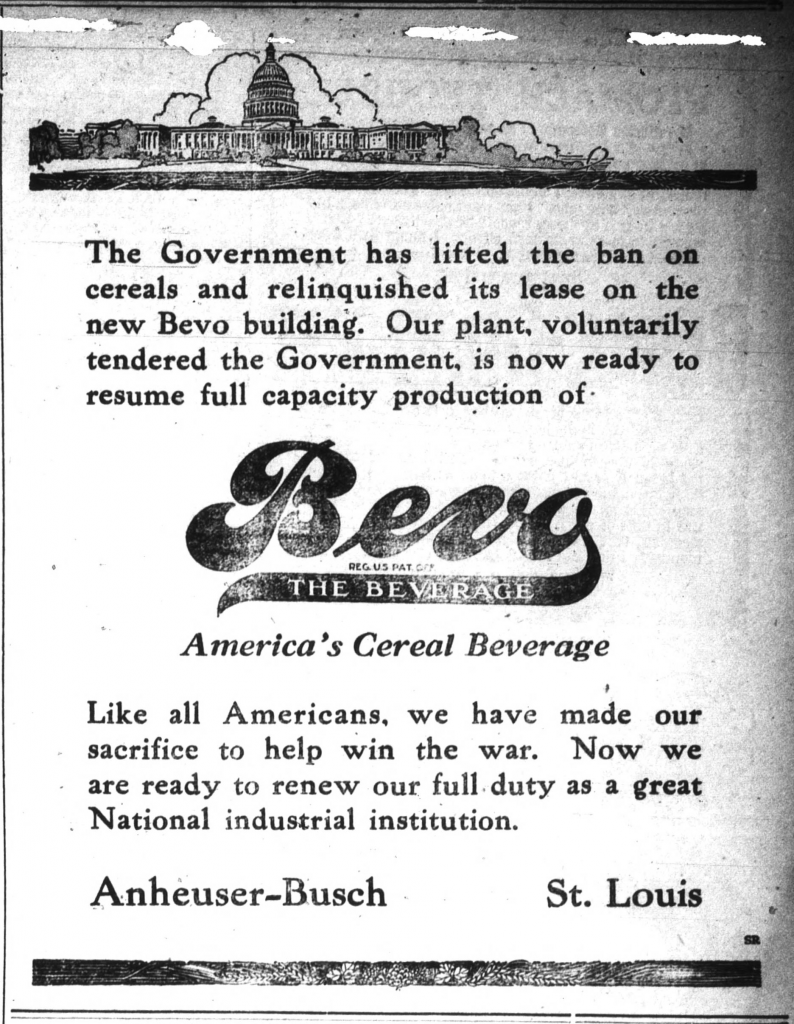
We’re not sure, but this may refer to Anheuser-Busch turning over his plant for meat packing during World War I (The National Provisioner, Volume 60, page 16). Bevo Advertisement, Alamance Gleaner 1919-02-27
Bevo was touted for its refreshment and purity as well as its wholesomeness and nutrition. Advertisements took advantage of the healthful connotation that cereals had gained around this time, in part due to the efforts of J. H. Kellogg. It was also–of course–marketed for its similarity to beer: “Bevo has been served in beer bottles to beer drinkers for two hours continuously without their discovering that it was not the usual beer” (American Brewers’ Review, 1916). Whether or not those beer drinkers were sober when duped isn’t mentioned…
Bevo did include a small amount of malt liquor, a fact that some prohibitionists felt disqualified it for sale under federal law. We located an argument in the Biennial Report of the Illinois Attorney General (p. 340-341, 1916) which presents some of the objections to Bevo as well as Anheuser-Busch’s counterargument that the lack of fermentation made it saleable. Most localities must have felt Bevo was an acceptable alternative, because it was at least initially wildly popular until its formula changed due in part to the Volstead Act (Bootleggers and Beer Barons of the Prohibition Era, p. 29).
While you unfortunately can’t try Bevo today, you can visit it. In St. Louis, near the area where the beverage was produced, stands Anheuser-Busch’s iconic “Bevo Mill” windmill. The entire surrounding area is known as Bevo Mill, a testament to a German-American’s attempts at keeping his beer company afloat and popular during prohibition and World War I.
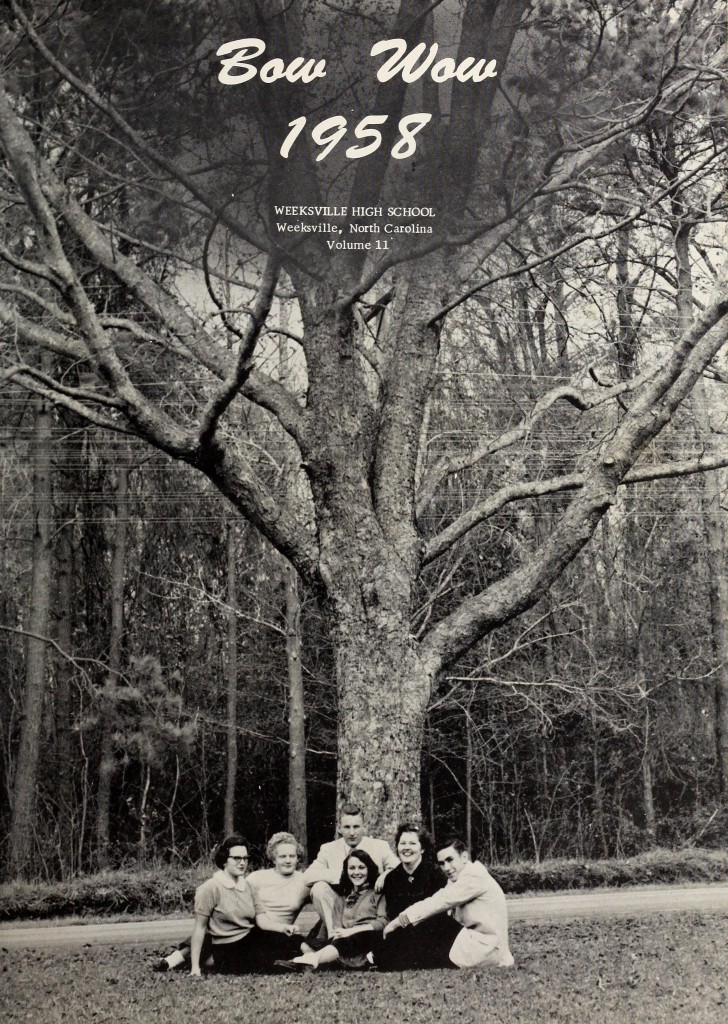
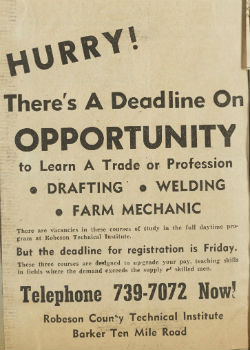
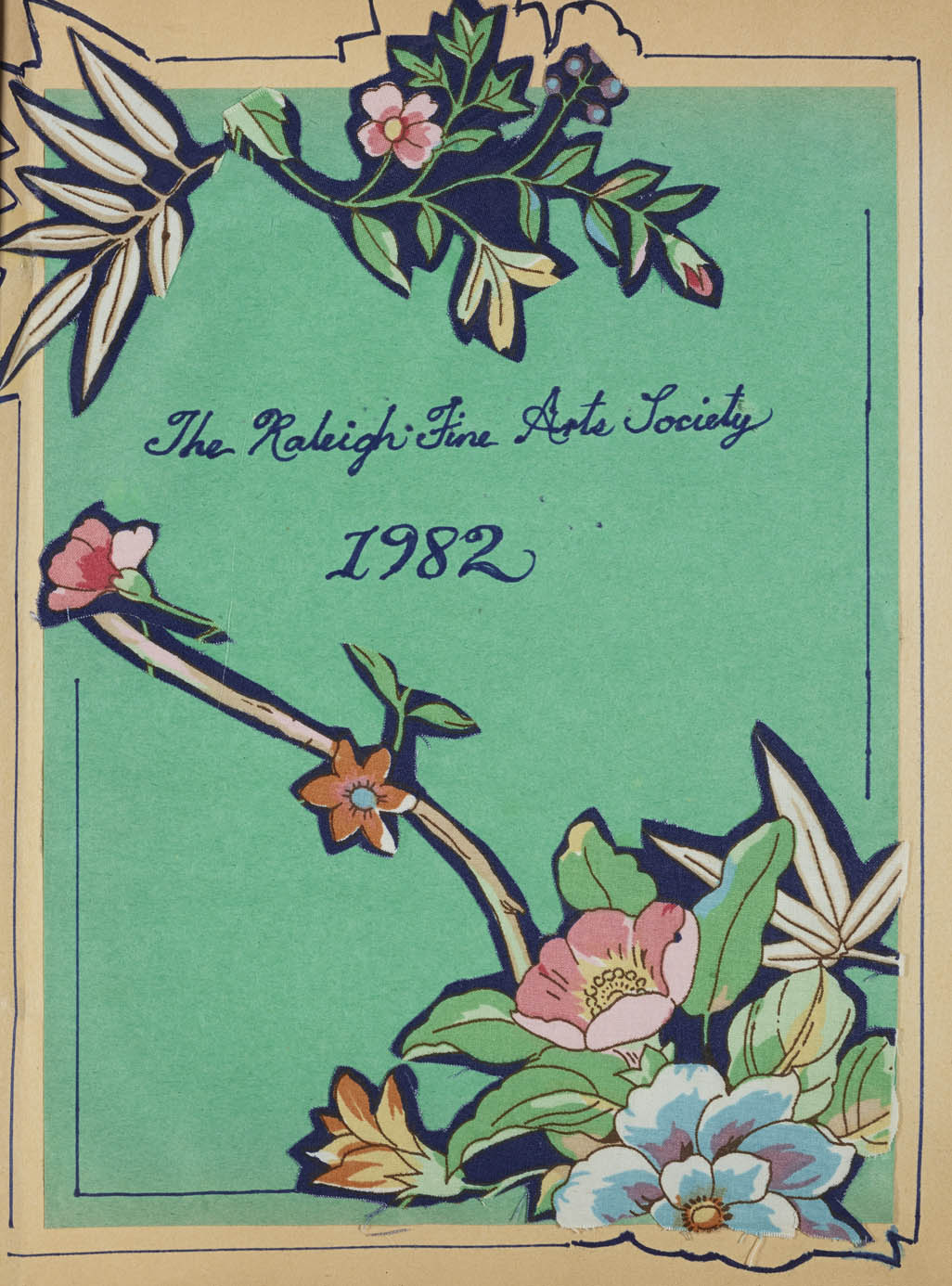 Scrapbooks from the Raleigh Fine Arts Society
Scrapbooks from the Raleigh Fine Arts Society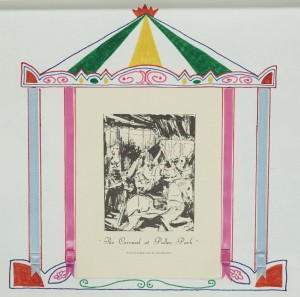
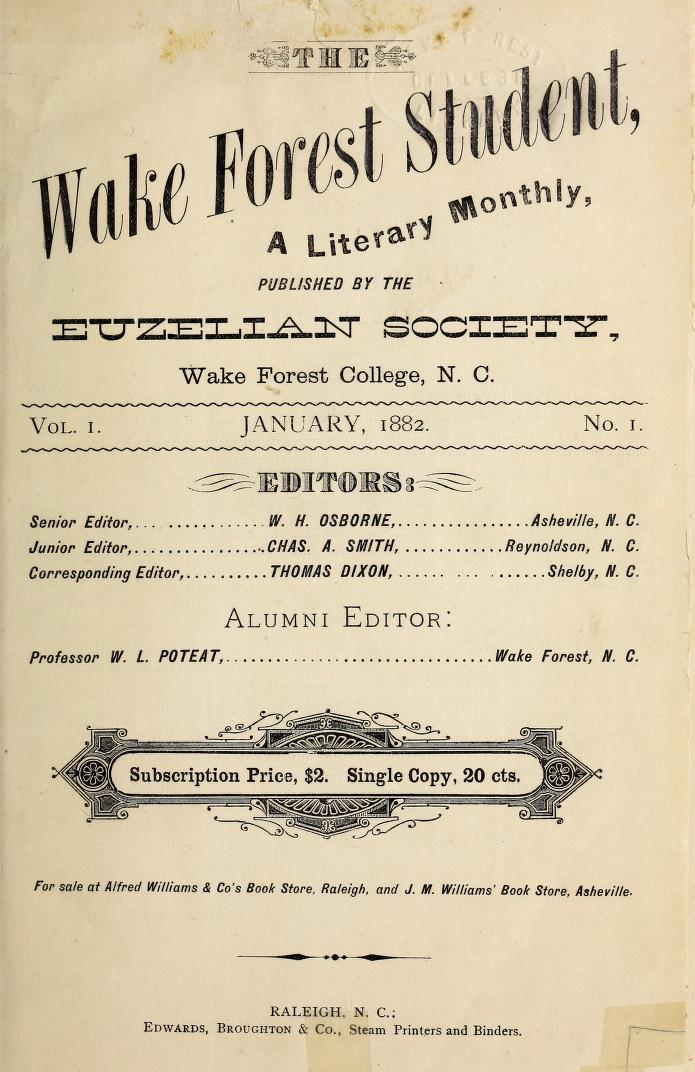 Beginning in 1882, the Euzelian Society at Wake Forest University published a literary magazine, The Wake Forest Student, addressing timely topics on campus and beyond. We’ve just added issues dating from
Beginning in 1882, the Euzelian Society at Wake Forest University published a literary magazine, The Wake Forest Student, addressing timely topics on campus and beyond. We’ve just added issues dating from 
